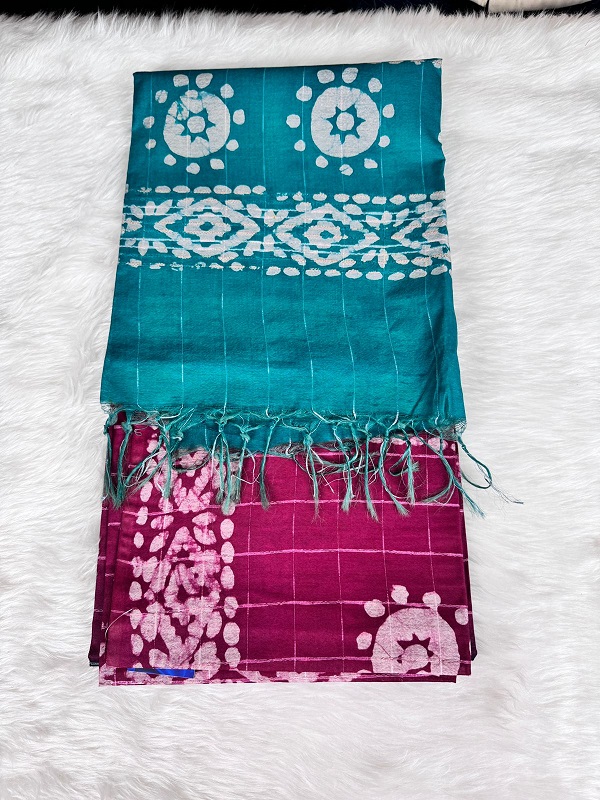Saree Fancy cotton Subhash Synthetics Tussar Printed Silk
₹999.00
The Banarasi saree is an iconic traditional garment that originates from the ancient city of Varanasi (also known as Banaras) in the northern Indian state of Uttar Pradesh. Renowned for its intricate designs, opulent fabrics, and rich history, the Banarasi saree is a symbol of Indian cultural heritage and craftsmanship.
Description
Historical Significance
The tradition of weaving Banarasi sarees dates back to the Mughal era, around the 16th century. It is believed that Mughal emperors introduced Persian motifs and weaving techniques to the local artisans of Varanasi, leading to the development of the unique Banarasi style. Over the centuries, the saree has evolved, incorporating various influences and innovations, yet maintaining its classical charm.
Characteristics and Designs
Fabric and Materials: Banarasi sarees are primarily woven from pure silk, known as Katan, although other variations like Organza (Kora) with zari (brocade) and Georgette are also popular. The hallmark of a Banarasi saree is the intricate brocade work made with gold and silver threads, which adds to its luxurious appeal.
Design Elements:
Zari Work: The use of gold and silver threads to create elaborate patterns is a defining feature. These threads are woven into the fabric to form motifs like floral patterns, leaves, and ornamental designs.
Motifs: Traditional motifs include Mughal-inspired designs like the kalga and bel, along with intricate floral and foliate patterns. Modern designs may also incorporate contemporary motifs to appeal to current fashion trends.
Border and Pallu: The border and pallu (the end piece of the saree that drapes over the shoulder) often feature heavily embellished designs, making them stand out as focal points of the garment.
Weaving Process
The creation of a Banarasi saree is a meticulous and labor-intensive process. It involves several stages:
Designing: The initial step involves sketching the design on paper. This design is then translated onto punch cards, which guide the loom during the weaving process.
Dyeing: The silk threads are dyed in vibrant colors, often using natural dyes, before weaving begins.
Weaving: Using traditional handlooms, skilled weavers, often working in family units, interlace the dyed silk threads with zari to create the intricate patterns. This process can take anywhere from 15 days to six months, depending on the complexity of the design.
Cultural Importance
Banarasi sarees hold a significant place in Indian culture, especially in weddings and festive occasions. They are often part of a bride’s trousseau and are passed down as heirlooms through generations. The sarees are not just garments but are seen as a piece of art that reflects the rich cultural heritage and the extraordinary skills of Indian weavers.
Modern Adaptations
While the traditional Banarasi saree remains a favorite among women, contemporary designers have reinterpreted it to suit modern tastes. Fusion styles, lighter fabrics, and experimental motifs have made Banarasi sarees more accessible to a younger audience. Despite these innovations, the essence of the Banarasi saree—the exquisite craftsmanship and luxurious feel—remains unchanged.
Preservation Efforts
To protect this traditional craft, various initiatives have been undertaken. The Banarasi saree has been granted a Geographical Indication (GI) tag, which helps preserve its authenticity and prevents the market from being flooded with imitations. Organizations and government bodies also provide support to the weavers through training programs, financial aid, and market access.
Additional information
| Weight | 0.65 kg |
|---|---|
| Dimensions | 12 × 12 × 10 cm |






















